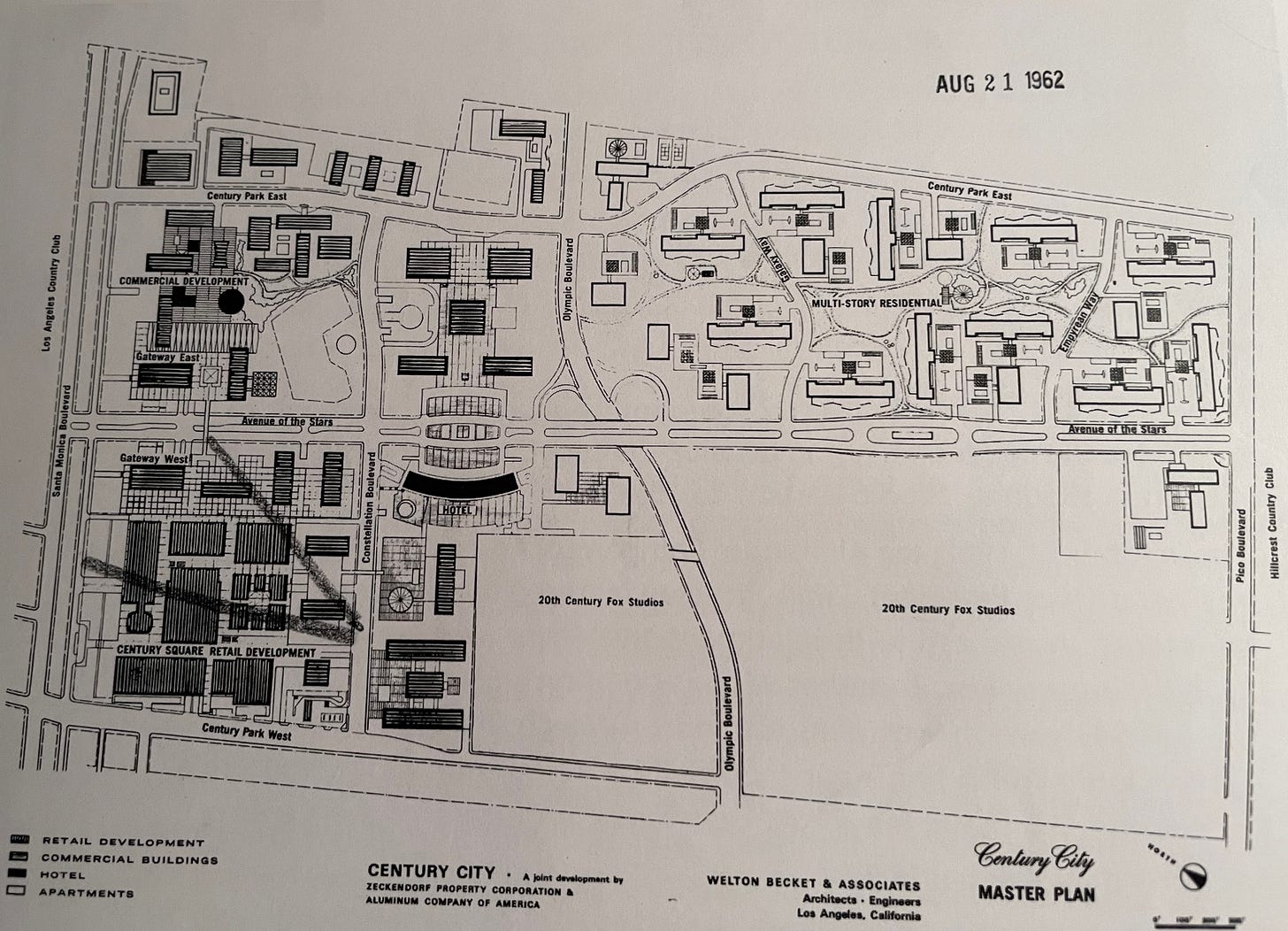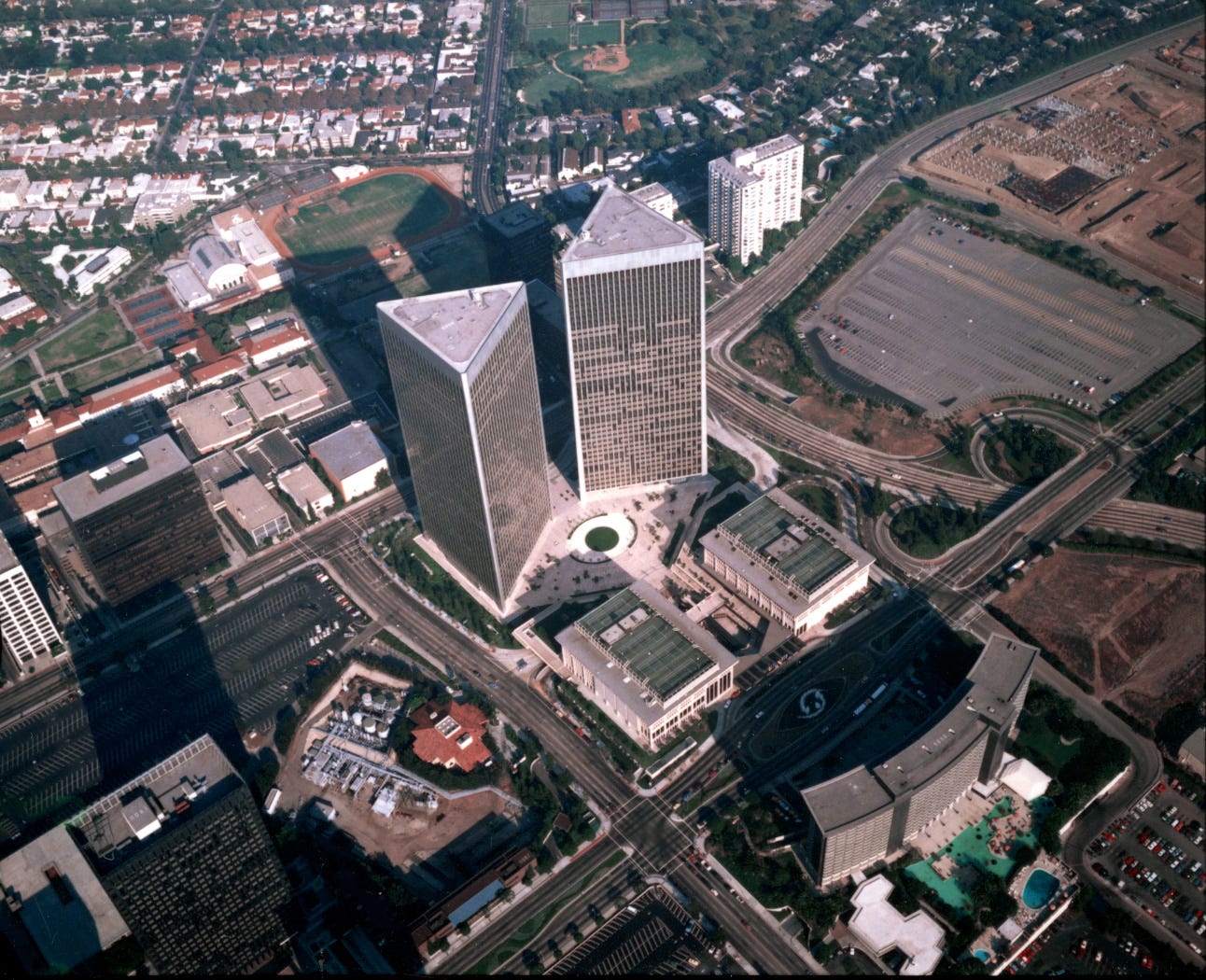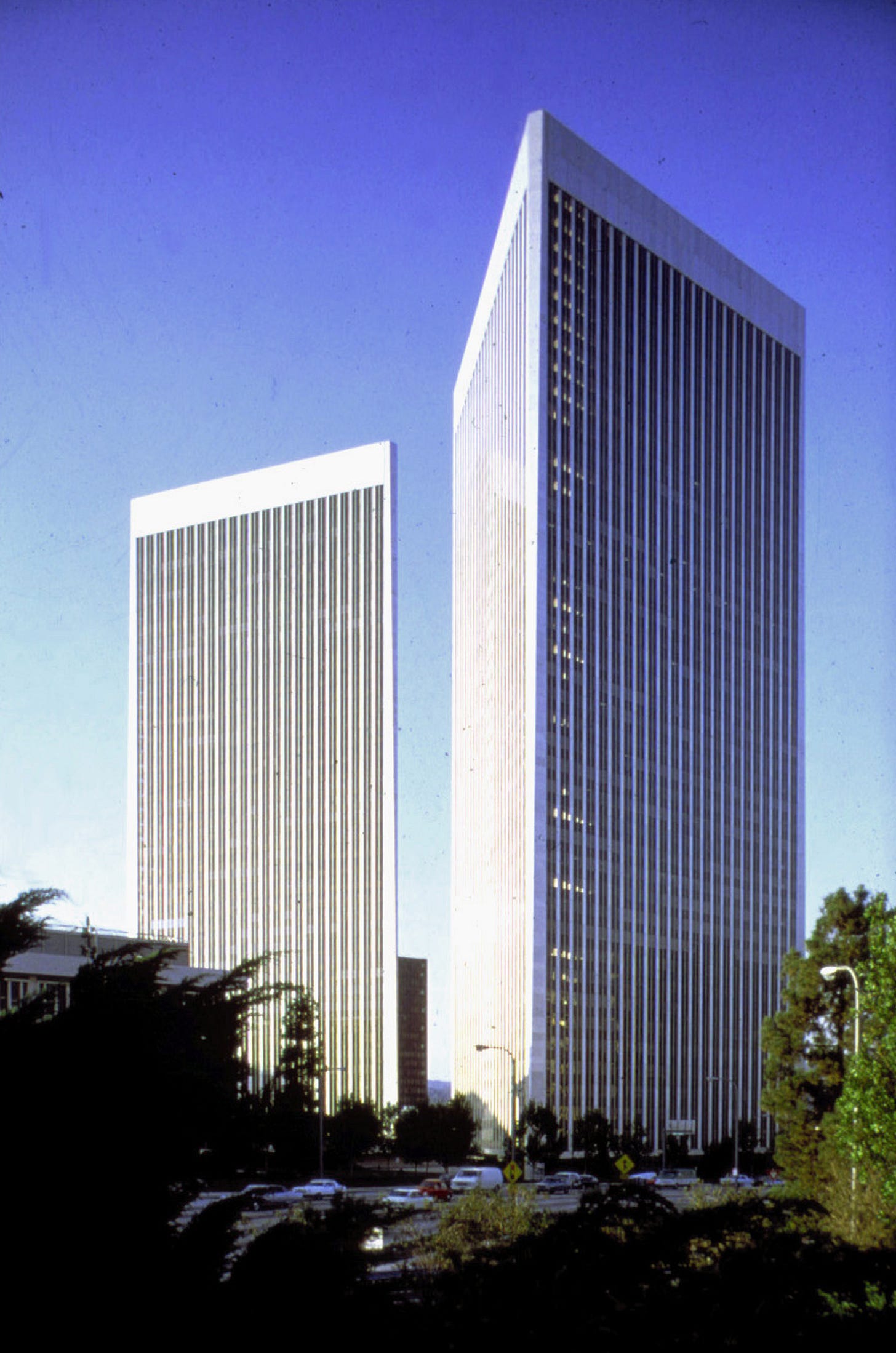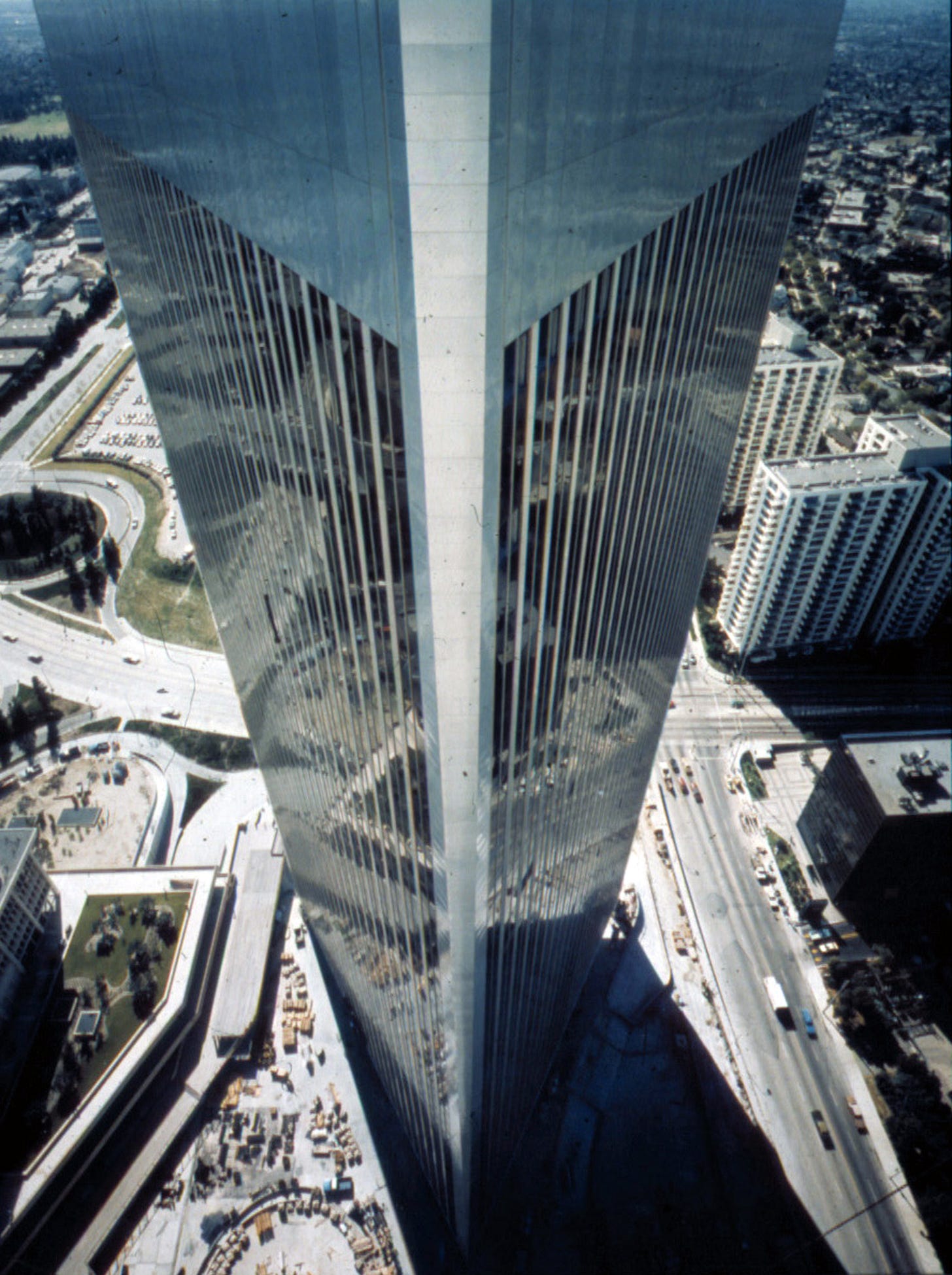Free Art Friday: Remembering Minoru Yamasaki—World Trade Center and Century City Towers
Clare Kunny, President of Art Muse LA
Japanese American architect Minoru Yamasaki is best remembered for the World Trade Center towers, designed by him in the 1960s, completed in 1968, and destroyed on September 11th, 2001. With the upcoming 22nd anniversary of the terrorist attack and the loss of these iconic New York buildings, which were among Yamasaki’s most famous projects, we want to remember another elegant project of his here in Los Angeles.
A recent monograph by Dale Allen Gyure (2017), titled Minoru Yamasaki: Humanist Architect for a Modernist World, provides a full study of the architect’s life and examines the concepts underlying the distinct qualities of his modernist architecture. Yamasaki challenged the concept that good modernist architecture must be powerful, overwhelming in scale without fussy ornament—a monument to corporate America. For Yamasaki, his elegant buildings are designed to be gentle, friendly, and not overpowering. When designing the World Trade Center towers, Yamasaki said: “I had long felt that it doesn’t really matter in Manhattan how high you go up; what really matters to people using the buildings is their scale at or near the ground.” This statement holds relevance for Yamasaki’s Century City Plaza Towers.
Yamasaki is the architect of three unique buildings in west Los Angeles’ Century City: the Century Plaza Hotel (now the Fairmont Century Plaza), and the two Century Plaza Towers. Over the past twenty years, Century City has been built up, gradually crowding out Yamasaki’s graceful trio of buildings. To find the towers now, one must seek them out among the many later, less graceful additions crowding the skyline. Seeing the buildings from various ranges, walking towards and around them, at vantage points from the ground up is the experience Yamasaki intended for us to have. And in Los Angeles, where car culture dominates the urban experience, few people take the time to walk around Century City in search of these iconic modernist masterpieces.
In Welton Becket’s master plan for century city, the crescent shaped hotel clearly marks the center of the design. Yamasaki was one of a select group of American architects commissioned to build Century City, a carefully planned 20th century metropolitan center. Welton Becket Associates designed the master plan for this “city within a city” in 1961 when Alcoa (the Aluminum Company) purchased 280 acres from 20th Century Fox Studios. The totally new complex of high and mid-rise buildings included corporate, retail, and residential sections, and an entertainment area with a hotel – theater complex. To design the modernist buildings Beckett brought in top American architects—Charles Luckman, I.M. Pei, Skidmore, Owings and Merrill, and Minoru Yamasaki. Governing the design of the center was the intention to inspire awe of corporate America, from the sleek overscale modern architecture to the wide avenues. A novel concept of the plan was underground parking, only moving cars were visible on the avenues of Century City. Originally, four pedestrian bridges offered access from one side of the broad streets to the other. Today only one bridge remains, making it a less people-friendly environment while emphasizing the soaring, corporate buildings.
The exception to the big, powerful buildings in Century City is the trio designed by Yamasaki.
His Century Plaza Hotel, completed in 1966, was one of the first buildings to rise in Century City. The 11-floor hotel is a crescent-shaped building, facing east across Avenue of the Stars. In harmony with the hotel, the twin towers of Century Plaza were completed in 1975, positioned in a grassy plaza across the avenue. Reminiscent of an ancient Greek amphitheater, the hotel welcomes visitors with the curving embrace of its structure and offers views of the towers. Imagining Yamasaki’s trio without the squat mid-rise building that replaced the former theater, the towers seem to be posing so the hotel guests can enjoy their elegant profiles. And at sunset, the towers become a lightshow turning pink to rose to orange.
In contrast with the rectangular skyscrapers that line the avenues of Century City, Yamasaki’s pair of towers are triangular and precisely positioned on the plaza in a dynamic relationship to each other that encourages the pedestrian to be mindful of the natural world and the built environment together. Each tower is 44-stories. The exterior envelope is composed of three substantial corner columns with delicate columns set across the facades that read as vertical stripes from a distance. Clad in an aluminum alloy, a material manufactured by Alcoa, the patron company, the buildings adeptly reflect the sun throughout the day and as it sets.
To fully experience Yamasaki’s humanist architecture, one only needs to stroll along the Avenue of the Stars in Century City. As you walk north to south on the avenue, pick out the twin towers and keep an eye on them, they are always visible. When you arrive at the Fairmont Century Plaza Hotel, consider its graceful curve and note how the balcony of each room has (or had) a view towards the towers. Cross the avenue to find your way to the grassy plaza where the towers stand. Notice where each building stands in relation to the other and take note of how they meet the ground and reach for the sky, almost as a tree or a sculpture. Yamasaki’s towers are gentle, elegant structures to contemplate.








